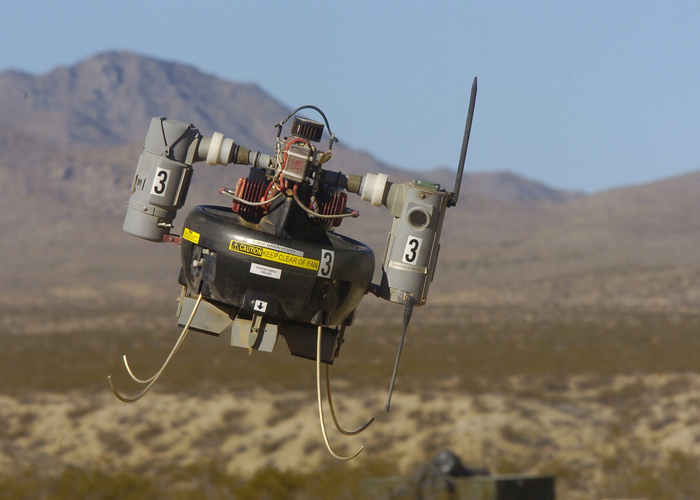
Data-driven government, with real-time applications improving mission outcomes and creating new efficiencies, demand more intelligence at the edge—on the battlefield and bases and in agency offices. Drones, autonomous vehicles, smart bases and many other real-time applications crunch massive amounts of data to inform decision-making or take action, and achieving those objectives demands powerful computing and network resources at the edge.[/caption]
In some ways, the intelligent edge is just another pendulum swing in computing architectures, but the intelligent edge is optimized for the mobile, IoT and cloud world. Mainframes provided centralized computing. Client/server distributed that compute power to the users. Cloud centralized those resources again, and application responsiveness is dependent on the network. But in most cases, the cloud model extends the physical distance between the devices and users in the field or branch, where the data is generated, and the cloud where the compute and storage lives. Greater distances inherently mean greater network latency, which impacts application response time. When split-second responses matter, so does physical distance.
Take the example of a self-driving car. An autonomous vehicle needs enough intelligence onboard to make decisions but also needs to communicate with the cloud to get updated information. The long roundtrip is slowing innovation. Bringing that compute power closer to nearby edge systems as autonomous vehicles move will improve the experience, operations and safety.
Data-Driven Applications Enhance Operations and Efficiency
Across the government sector, agencies are exploring ways to use data to improve resource decisions, protect our nation and enhance service members’ quality of life. The rise of IoT, sensors and other smart devices add significantly to the possibilities.
On the battlefield, soldiers leverage autonomous vehicles, robots and drones for reconnaissance and delivery of force. Real-time analysis of video feeds from bodycams can provide live face or object detection, but requires processing massive amounts of data in real time. An intelligent edge network can handle that job and ensure split-second timing. Surveillance works best when it’s real time.
The intelligent edge will play a role in day-to-day operations at military bases. Bases fundamentally function as small cities, and like municipalities, they consume energy and water and generate waste. Smart city technologies, built on a foundation of sensors, data analytics and an intelligent edge network, can enhance base operations and conserve resources. Water usage can be actively monitored to reduce waste. Cameras, sensors and analytics can improve safety and security for real-time surveillance and emergency response.
Automated building management systems can control lighting and temperature to maximize comfort, save energy and lower operational costs of base operations. The military can enrich the quality of life, with smart building systems that make real-time environmental adjustments to fitness centers, pools, conference centers, restaurants and other recreational spaces.
An Intelligent Edge is the Foundation
At Aruba, we believe the next generation of data-driven applications is only possible with local intelligence. The intelligent edge closes the gap by putting the compute power closer to the edge—where the sensors and devices are and where the action is happening.
The intelligent edge combines connectivity, compute power and control. People, devices and things are connected, creating new sources of data to be analyzed. Compute systems can analyze this data, provide access to applications and provide new insights about these things and the environment. These insights are then used to take action, and control the devices or things at the edge or prompt other types of control actions.
Software-defined networking enables a flexible, highly reliable connection the edge to the cloud. Intelligent edge networks also support survivability. If the network connecting the sensors or devices goes down, local computer, storage and network resources can keep the drones in the air until the cloud connection reestablishes.
The intelligent edge also reduces cloud networking and storage costs. Huge amounts of data are generated at the edge, and by analyzing data closer to the source, less data is sent back and forth to the cloud. That delivers operational savings.
Security is another advantage. Many IoT devices are lightweight and don’t have the processing power to run traditional security software. But an intelligent network can handle encryption for these devices, ensuring the integrity of communications. And it can inspect traffic coming from these devices to make sure they aren’t compromised in the field, and if so, limit the spread of an attack.
Aruba is Advancing the Intelligent Edge
At Aruba, we are focused on creating network solutions that deliver the innovation, agility and flexibility to power this next generation of data-driven, real-time applications. Aruba Central,our cloud-managed network, makes it easy to deploy connectivity to locations without onsite technical expertise quickly. Aruba SD-WANsolutions can provide reliable, resilient connectivity quickly and easily, and assure the quality of service down to the devices in the branch or field. We have reinvented core and aggregation switchingto extend intelligence from the core to the edge.
Aruba is committed to lead the way, with innovative, agile and secure networking from edge to cloud. That’s why Aruba solutions have been deployed into thousands of federally validated and policy-compliant wireless network for the US government and Armed Forces.
Learn More
Watch Aruba CEO Keerti Melkote’s keynote on the intelligent edge at HPE Discover Madrid.
Network World: Aruba co-founder: We want to live on the edge
HPE Executive Blog: The Intelligent Edge: What it is, what it's not, and why it's useful




